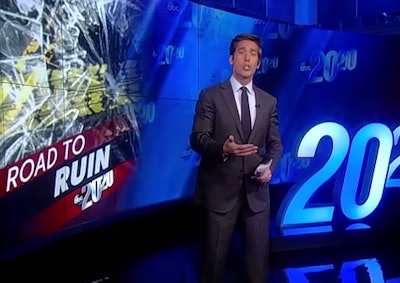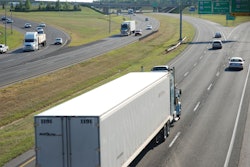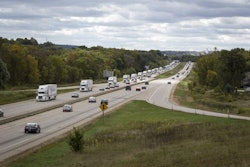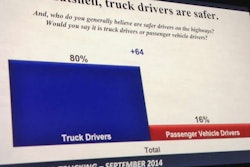It’s a perennial subject, of course. On p. 2 of this month’s Overdrive, reactions to CNBC’s unfortunately-titled “Collision Course” series from the summer (yes, that’s right, Happy Fall, drivers — for those not paying attention to their calendars, the season officially got going yesterday, I believe) headed up the Voices section. And, in general terms, I can’t begin to count the number of mainstream specials that have “exposed the dangers” of big trucks over the years, breathlessly rattling off the alarming statistics around truck crashes and, it never fails, burying the lead, as they say in the news business: that the large majority of truck-involved crashes are no fault of the truck’s driver.
 You can watch 20/20’s “Road to Ruin” special via this link.
You can watch 20/20’s “Road to Ruin” special via this link.Well, here we go again, with another wonderfully titled feature from a major network — the 20/20 “Road to Ruin” special hinges on the deadly combination of fatigue and speed in large trucks, stemming again from renewed emphasis on fatigue in the wake of the high-profile Walmart crash this past June. I won’t get far into it here (you can view for yourself via this link), but following a “bear in the air” helicopter trip to pull over a speeding truck, the network’s reporter does at least call on the perspective of one driver who felt that, in a particular instance he caught on his video camera, he was well pushed beyond his limits by his carrier.

That’s more than can be said for another piece published of late at ThinkProgress.org, a left-of-center online politics and culture journal. The story, “The Link Between Tracy Morgan’s Tragic Accident and Trucker Pay,” gives expansive treatment to reconstructing the timeline and political machinations of failed industry efforts to influence lawmakers to force FMCSA to better justify the 2013-amended restart rules and put them on hold in the interim. Those efforts were derailed in part by the aforementioned high-profile accidents, which have put more public focus on how drivers are compensated, how the per-mile-pay structure, some argue, itself is incentive to test endurance limits to make a wage.
But for its trucking perspective, the ThinkProgress piece relies only on the American Trucking Associations and a representative of the Teamsters Union, whom the writer notes as pointing to “Teamsters contracts [that] protect unionized drivers from [dangerous schedules] and wage pressures.” As the Teamsters rep, Fred McLuckie, is quoted, “our concern is we’re sharing the road with those guys who are pushed to the limit. It’s a safety question for everybody who’s on the road.”
He’s not talking about every nonunionized driver out there, of course, but the way the writer sits the quote in the story he might as well be. (At the same time, I won’t argue at all with what McLuckie goes on to prescribe as one wonderful way to inject a measure of safer operation all around: “pay drivers better wages,” whether per-mile, percentage or hourly. In any case, the story’s worth the read via this link.)
What might you have told the writer, given the opportunity? I had a great conversation this morning with Christopher Fiffie about what he’s been doing via his video work with the Chrome Shop Mafia/4 State Trucks as well as his BigRig Videos Youtube channel and Facebok page. He put together a sort of public service announcement-type spot. highlighting drivers and their families speaking to what members of the motoring public can do make their jobs on the road easier. It’s a great spot — we featured it in this linked post (and you can catch it below). I bring it up simply to note what Fiffie had to say about his reasoning creating the video and disseminating it to media outlets around the nation. There could be many reasons mainstream outlets may not share such a spot.
But he wondered particularly about one, and his words described the phenomenon we’ve experienced lately well. Perhaps, he noted, those news organizations that didn’t respond to the positive message about the nation’s truck drivers simply wanted to keep “the trucker in their back pocket as a tool of destruction to pull out” in the event of any high-profile accident.
If only subject matter such as the following rated so highly:
[youtube bAdJ9XcuJug nolink]
And remember: The only cure for fatigue is …












